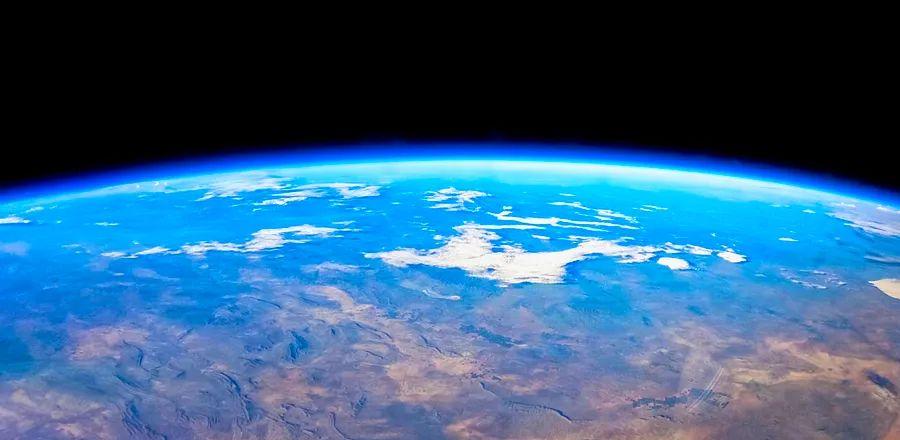The Private Companies Leading the New Space Race

Space travel embodies extremes. With ticket prices soaring—often equating to the cost of an average U.S. home—and only a brief time spent weightlessly admiring Earth’s delicate blue edge, the experience can be fleeting. Nevertheless, an increasing number of individuals are embarking on space journeys, fueling a booming industry.
Three space moguls—Jeff Bezos, Richard Branson, and Elon Musk—are driving the space travel sector forward. Thus far, their clientele has been a small segment of humanity, including celebrities like Star Trek’s William Shatner and ultra-wealthy entrepreneurs like Jared Isaacman, who built his fortune from a payment-processing company he founded as a teenager. The era of enjoying electric-blue cocktails on luxurious space stations isn’t yet within reach for the masses, but for those with the aspiration (and financial means) to explore the outskirts of space, these companies are the ones to watch.

Courtesy of Blue Origin
Blue Origin
Preparation: Two days of training involve touring the New Shepard rocket, experiencing launch simulations, and learning how to behave in zero gravity (no reenacting scenes from The Matrix).
Cost: Bezos has kept ride prices confidential. However, during an auction for its first crewed flight in July 2021, the winning bid reached $28 million for a single seat.
Established in 2000 by Amazon CEO Jeff Bezos, Blue Origin offers travelers 11-minute journeys into space. Notable passengers include William Shatner, who was deeply affected by the experience, commenting on the fragile boundary between Earth and space: "This air that sustains us is thinner than your skin. It’s crucial for everyone to have that experience," he told Bezos.
The reusable New Shepard rocket elevates travelers to 62 miles above Earth, just past the Kármán line—the theoretical boundary recognized by the leading international aeronautical organization, the Féderátion Aéronautique Internationale, as the beginning of space, where the atmosphere is too thin to support aircraft.
At the flight's peak, passengers experience several moments of weightlessness while gazing through their own windows (measuring nearly 43 by 29 inches, the largest available) before the capsule gently descends back to the desert.

Photo by Mark Greenberg/Virgin Galactic
Virgin Galactic
Preparation: After a year of planning, the experience culminates in several days of teamwork and bonding as a passenger group, aimed at ensuring everyone is ready to fully enjoy the spaceflight. Passengers are also fitted for custom Under Armour space suits and boots.
Cost: $450,000
British entrepreneur Richard Branson’s Virgin Galactic provides an experience aboard its SpaceShipTwo suborbital spaceplane, designed to operate both within Earth’s atmosphere and in outer space. Like any flight, the adventure begins on a runway. The spaceplane is carried by a mothership to 50,000 feet, after which the rocket ignites, propelling it upward.
The 90-minute journey reaches a peak altitude of 53 miles: short of the Kármán line, but beyond the 50-mile threshold recognized by NASA and the Federal Aviation Administration as the beginning of space. Initially, SpaceShipTwo was meant to soar above 62 miles, but challenges with its motor design led to a version that lacks the power to achieve that height. Passengers experience four minutes of weightlessness before re-entering the lower atmosphere and gliding back to the runway.
Virgin Galactic emphasizes the ‘overview effect’ as a key benefit of its space services: the profound shift in perspective that often occurs when viewing Earth against the backdrop of space. Many astronauts express deep emotions as this unique viewpoint highlights the fragility and interconnectedness of life on our planet. In 2019, Beth Moses, Virgin Galactic’s Chief Astronaut Officer, became the first woman to travel to space on a commercial vehicle, later making a second journey in July 2021 aboard the same spacecraft.

Courtesy of SpaceX
SpaceX
Preparation: To get ready for a three-day orbital journey, one crew underwent six months of training, including centrifuge spins, fighter jet flights, launch and re-entry drills, and even a team-building climb up snowy Mount Rainier.
Cost: Approximately $55 million
Under the leadership of tech entrepreneur Elon Musk, SpaceX offers the only orbital tours available. These journeys are exceptionally exclusive; by July 2022, only eight civilians—including fortunate individuals, affluent businesspeople, and a retired astronaut—had circled Earth aboard SpaceX’s spacecraft, orbiting the planet every 90 minutes. For these missions, the company employs the same Falcon 9 rocket and gumdrop-shaped Dragon spacecraft used to transport NASA astronauts to the International Space Station (ISS). Passengers have reported that SpaceX's flights subject them to longer and rougher g-forces, with the rocket exerting about 4.5 times the force of Earth's gravity on them.
The company has facilitated civilian journeys, including a three-day orbit around Earth, while some business executives enjoyed a two-week visit to the International Space Station, chartered by Axiom Space. In 2023, SpaceX plans to send Japanese billionaire Yusaku Maezawa on a lunar mission.
During their orbit in the 13-foot-wide Dragon, positioned 357 miles above Earth, a crew of four shared a toilet, went without showers, and slept secured in their launch seats. Their meals consisted of cold options like pizza, sandwiches, and bolognese. On the ISS trip, three civilians and their former astronaut captain dined on NASA's freeze-dried fare. Their stay was prolonged due to unfavorable landing weather, during which they conducted various scientific experiments, including a regenerative medicine study on cardiac cells for the Mayo Clinic. Both adventures concluded with a splashdown in the Atlantic Ocean.

1

2

3

4

5
Evaluation :
5/5